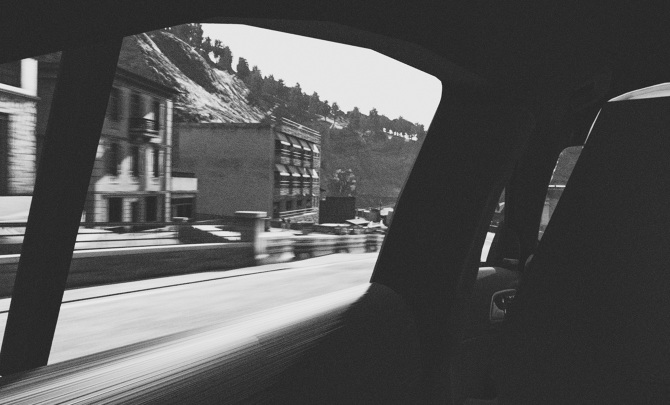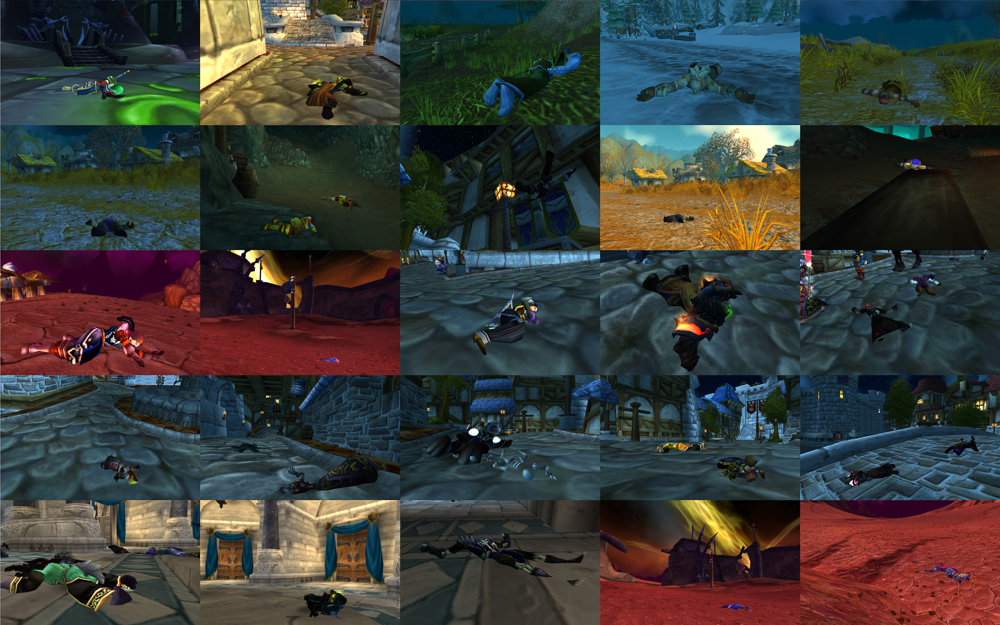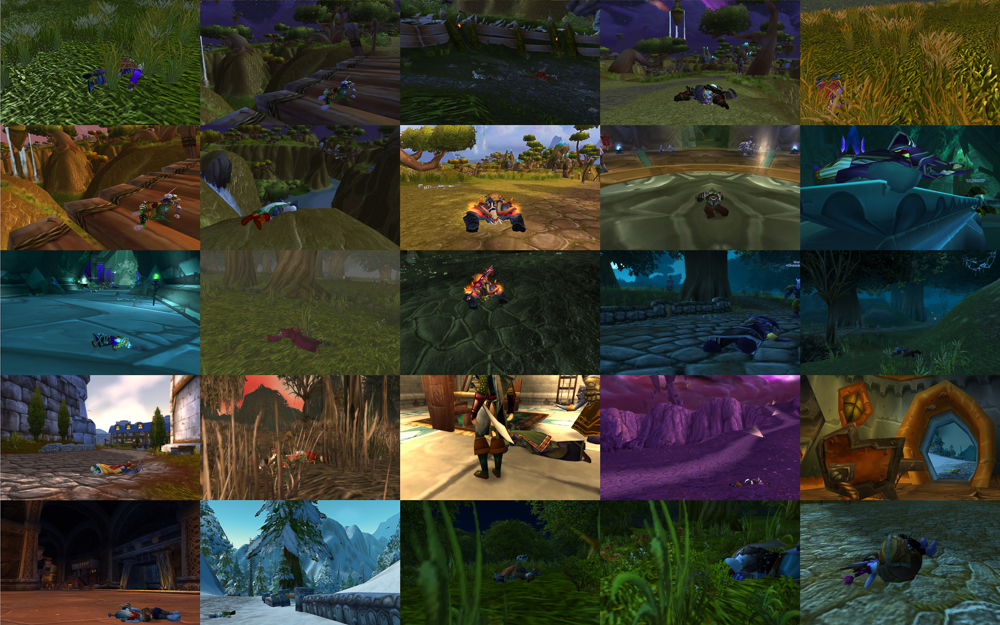Game Photograpy: Photography in a Virtual World
Taking screenshots in a video game doesn’t sound like anything special to your average gamer, but it’s a form of photography and more interesting than you might think. Various photographers and artists use game photography to tell stories in new and exciting ways.

The landscape of Skyrim captured like a romantic painting by Duncan Harris
What is game photography?
It is common behavior when you are on vacation. Whenever you see something nice, out of the ordinary or characteristic, you stop for a moment to grab your camera and take a picture. You might want to cherish the moment or capture it to share with others. Maybe you would like some proof of where you’ve been and what you’ve seen or done. There are many reasons you can think of. And the threshold is so low these days. Virtually everybody has a mobile phone with a camera reducing the effort and cost of a single picture to minimal amounts. Anything can become a picture. Everything can be captured.
It is not much different when playing a video game. You could see a beautiful landscape, have a strange encounter or you experience something special. You are exploring a virtual world and you might feel that same need to grab a camera and capture what you see. In these cases you, the gamer, can take a screenshot and the computers stores an image of what the gamer sees on-screen. You get a picture and capture your virtual moment just like any other capture you’d make in life.
That is not photography, there is no camera!
There is no physical camera involved in this scenario, that much is true. But does that matter? Would it be more photography if instead of taking a screenshot, I would take a picture of my screen? It would be quite an arbitrary difference, if that would make the difference.
There are virtual camera’s though. Game developers have added in game cameras to many big name games. Sometimes it is quite literal like in Grand Theft Auto V where your character walks around with a smart phone that you can use to take pictures. In other cases the implementation is more technical and not connected to the story. There are games in which you can pause the gameplay and chose a viewpoint independently from the character you are playing. You can pick your field of view, your angle, your framing… you can do everything you would do with a normal camera. The mindset you have while doing “normal” photography is also transferable to photography in a virtual world. Rules of composition still apply. Selections still need to be made. The workflow and skill set is very much the same, just a tad more digital.
NVIDIA Ansel
The ultimate support for game photography comes from NVIDIA, the biggest manufacturer of video cards and chips for computers, game consoles and other devices. Recently they have introduced a virtual camera called Ansel. Game developers add this tool, named after the famous photographer Ansel Adams, to their games. When playing these games it offers:
- Basic camera control like the viewpoint and field of view
- Saving images in a RAW-format, just like a DSLR
- Up to gigapixels of resolution, that is 100+ times what a DSLR can do
- Built-in 360 degrees capture
- 3D captures for use with VR headsets
A proper virtual camera can do everything a normal camera does, and more. Game photography is not limited by the physical restraints of the real world.
A 360 degrees view in Mirror’s Edge Catalyst taken with Nvidia Ansel.
There is no creativity in taking pictures of something that somebody else made.
This is an argument I have heard before that makes absolutely no sense. Ask any architectural photographer or product photographer if they see themselves as being creative. In fact, let me turn this around. There is more creativity possible in game photography than there is in conventional photography.
A gamer focused on taking pictures moves through a virtual world much like a normal photographer would. They hunt for images, constantly looking around and trying their best to find the framed image that aligns with what they have in mind. They can observe situations objectively or intervene and manipulate their environment.
A game photographer is able to influence and shape their virtual world in extreme ways and with more freedom than in the physical world. Unnatural viewpoints or capture methods are easily possible. A game modification, script or setting changes the weather and the light. The worlds in games can be very extensive on their own, and interesting enough to be the subject of many different views. Recent games like No Man’s Sky feature landscapes that aren’t even designed, but rather procedurally generated.
A comparison of Skyrim with and without modifications.
Besides being a ready-made environment, these virtual worlds are also shapeable like clay. For an artist with a vision, these worlds are just a starting point. An artist has the ability to take something that somebody else made, and make it his own. A great example of that is user cy_sperling on Reddit who doesn’t play Grand Theft Auto V like a gang member or thug (like most people) but as a war photographer.


A selection of interesting projects that feature game photography
There are more and more artistic projects that use game photography every day. Here is a selection of them to give you an impression of the quality and the wide range of contemporary projects.
Study of Perspective – Roc Herms
Roc Herms creates a paralel between the works of Ai Weiwei’s Study of Perspective and the Grand Theft Auto Games.




Another Day of Depression in Kowloon – Ip Yuk-Yiu
Another Day of Depression in Kowloon is a virtual study and a digital portrait of Hong Kong as seen through the lens of contemporary popular culture incarnated in the forms of video game and screen media.
Backseats in videogames – Leonardo Sang
This project turns many racing video games into a backseat experience.




A Land to Die in – Eron Rauch
These images feature every dead body photographer Eron Rauch saw while playing the game World of Warcraft for a certain period.




Artists/Photographers/Gamers
- Duncan Harris – http://deadendthrills.com/
- James Pollock – http://virtualgeographic.tumblr.com/
- Kent Sheely – http://www.kentsheely.com/
- John Paul Bichard – http://www.idealmilk.com/
- Leonardo Sang – http://cargocollective.com/leosang
- Roc Herms – http://www.rocherms.com/en/
- Rob Wetzer – http://www.robwetzer.nl/
- Colleen Flaherty and Mattteo Bittanti – http://colleo.org/
- Ollie Ma – http://www.olliema.com/open-world/
- Robert Overweg – http://www.shotbyrobert.com/
- Iain Andrews – http://enwandrews.tumblr.com/
- Josh Taylor – http://joshtaylorcreative.com/
- Ip Yuk Yiu – http://www.ipyukyiu.com/
- Eron Rauch – http://www.eronrauch.com/
- Karl Smith – http://illsnapmatix.com/
Game photography’s popular games
- Grand Theft Auto V – A large open world that is dynamic and features changing light. Comes with a camera. What’s not to love?
- Skyrim – The world of Skyrim is a vast wilderness with medieval cities and villages that gamers can greatly modify.
- Firewatch – This beautiful stylized story in the woods features an in-game disposable camera. The pictures you take with it can be ordered as prints.
- Mirror’s Edge Catalyst – Explore a dystopian city from its vast rooftops and graphical white highrises. This game works with Nvidia Ansel.
- Fallout 4 – You can spend many hours in dystopian wastelands that can be both beautiful and eerie.
- The Vanishing of Ethan Carter – This game feels like cheating. The beautiful landscapes make every screenshot a postcard.
Further reading related to game photography
These links could be your first step if you’re interested in game photography and would like to read or (more importantly) see more.
- Jean Baudrillard – Simulacra and Simulations
- http://deadendthrills.com/forum
- http://videogametourism.at/content/art-game-photography
- http://www.hopesandfears.com/hopes/culture/video-games/213967-video-game-photography
- http://www.gamescenes.org/photography/
- http://motherboard.vice.com/read/the-art-of-video-game-photography
- http://kotaku.com/5866739/the-man-behind-the-worlds-best-video-game-screenshots
- https://issuu.com/rocherms/docs/joannadark
Follow-up questions on the role of game photography
The following questions are a possible starting point if you would like to investigate game photography in an (artistic) project.
- How do these virtual worlds compare to the physical?
- How does our behavior in virtual and physical worlds compare?
- What would you do if what you can do in a virtual world, would be possible in the physical world?
- What would be an appropriate way to present game photography?
- Can we use these virtual worlds to say something about our physical world, or vice versa?
- Why do we feel the need to capture what we do, even in a virtual world? (Or why wouldn’t we?)

Recents comments